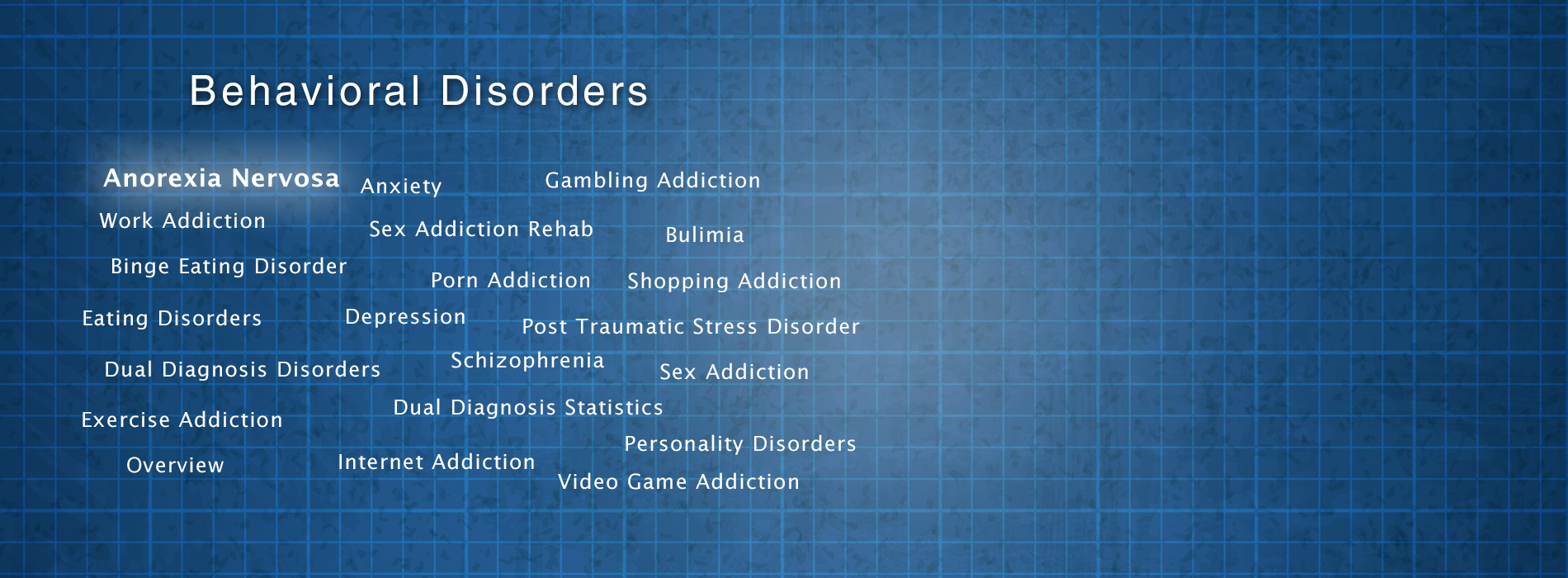Anorexia Nervosa
According to the latest edition of the Diagnostic and Statistical Manual of Mental Disorders (DSM): “Anorexia nervosa, which primarily affects adolescent girls and young women, is characterized by distorted body image and excessive dieting that leads to severe weight loss with a pathological fear of becoming fat.” Other diagnostic criteria include significantly low body weight and a lack of acknowledgment that the current low body is potentially dangerous to the individual’s health. Because of its effects on the body, anorexia has the highest mortality rate of any psychological disorder.
Anorexia usually emerges during adolescence (ages 14 to 18), which is several years earlier in life than other eating disorders. Women are affected ten times more often than men with 0.9% to 4.3% of women and 0.2% to 0.3% of men affected in Western countries. Rates of anorexia in the developing world are unknown, but they are speculated to be lower than that of developed countries.
There are two types of anorexia nervosa. Restrictive type is when a person severely limits their food intake. This can take many forms, such as only eating once per day, obsessively keeping a low calorie intake, or only eating certain types of food. The binge eating/purging type is where the individual engages in binging – eating more than a normal amount of food in one sitting – and purging through intentionally vomiting, excessive exercise, or abuse of medications such as laxatives or diet pills. The binge eating/purging subtype of anorexia differs from bulimia in that the person has experienced a significant weight loss of 15% of the ideal body weight or greater, whereas bulimics have a normal body weight and are occasionally overweight.
There are many signs of anorexia that are not necessarily obviously related to the disorder. People with anorexia often are perfectionists who are obsessed with other aspects of their appearance in addition to weight. They may exhibit impulsive cleaning or exercising and are highly self-critical. Anorexics often cut their food into small pieces or obsessively avoid particular foods. Due to their distorted body image, they often deny their thinness and may withdraw from family and friends. Due to the lack of nutrition and healthy levels of body fat, people with anorexia may experience thinning hair, hypersensitivity to the cold, low pulse rate, and lack of menstrual periods. More severe cases can lead to heart failure, decreased liver or kidney function, and death.
Treatment for anorexia involves helping the person return to a healthy weight as well as addressing the underlying mental aspects of the disease. Therapy that involves the patient’s family has been shown to be the most effective means of treatment. Treatment usually involves creating a meal plan for the patient that gradually increases their calorie intake over time to a healthy level.
If you believe someone you know has anorexia, it is important to remain calm and understanding when speaking with them. Select a private location to speak with them, bring resource information with you, and avoid blaming language. Do not put the focus of the conversation on weight or appearance, but instead focus on health. It is not uncommon to be rejected at first, but do not argue with the person, as that will just push them away. Express your concern for the individual, let them know that you care about them, and encourage them to seek help.

